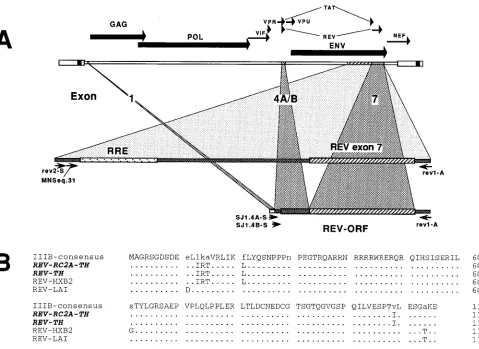Restriction of human immunodeficiency virus type 1 production in a human astrocytoma cell line is associated with a cellular block in Rev function.
Full text
Figure




Related documents
These results attribute a critical role to the HA glycoprotein in determining cell tropism, while the F protein is a necessary factor in the fusion process but is interchangeable
Tax protein of human T-cell leukemia virus type I binds to the ankyrin motifs of inhibitory factor KB and induces nuclear trans- location of transcription factor NF-KB proteins
Synthetic polymeric constructions (SPCs) including the consensus sequence of the human immunodeficiency virus type 1 (HIV-1) surface envelope glycoprotein gpl20 V3 loop (GPGRAF)
We therefore compared the specificity of furin with those of proteases in a variety of cultured cells and in a rat Golgi fraction, using the HA cleavage mutants of a virulent
Role of DNA replication in vaccinia virus gene expression: a naked template is required for transcription of three late transactivator genes. Overexpression, purification, and
infected with vRVH with anti-H; lane 9, cells infected with vRVF with anti-F; lane 10, cells infected with wild-type vaccinia virus. (Wyeth) with anti-H and anti-F sera; lane
These results suggest that H13, the human equivalent of the murine ERR, can acquire the ability to function as the MuLV-E receptor if amino acid residues at positions 240 and 242 or
Mutant HA molecules having only five oligosaccharide side chains are transported to the plasma membrane. To deter- mine whether various combinations of subsets of the seven